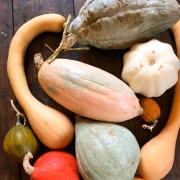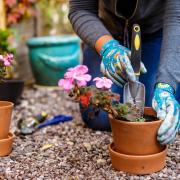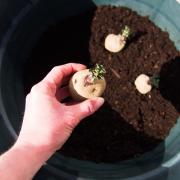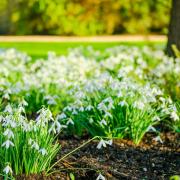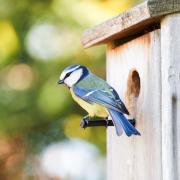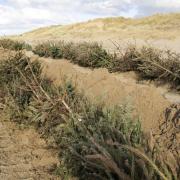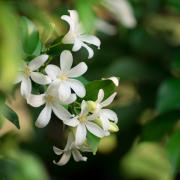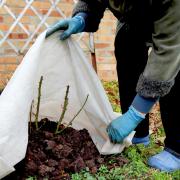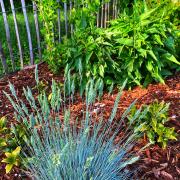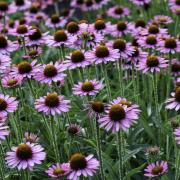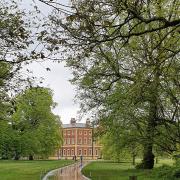Over the last decade, volunteers have restored the kitchen garden at Turton Tower in Bolton
WHO?
Anna Harvey got together a group of volunteers just over ten years ago to transform an overgrown area full of brambles, ferns, old bushes and trees at Turton Tower into a garden.

‘I used to pass it when out walking in the area and could see the potential and after chatting to friends sowed the seed and manage to gather a group of volunteers together,’ she said. ‘It took us two years of determination; we had no machinery, just man power and plenty of blood sweat and tears to clear it. We started planning what to put where and as we had no funds we had to beg and borrow. We then applied for help from Blackburn and Darwen Council.’

WHAT AND WHERE?
Set in the tranquil gardens of Turton Tower, the Kitchen Garden was established in Victorian times but fell into disuse and became badly overgrown in the 20th century, though it was worked for a few years during and shortly after World War Two.
It is set on a sloping site, with four large beds and borders which have been subdivided for vegetables, herbs, herbaceous perennials, summer annuals, soft fruit and a variety of fruit trees. Some parts have been developed to reflect the history of Turton Tower, too, and spring bulbs give a fine and increasing display from late February to early April.
Thanks to a grant from The Big Lottery Fund for the materials, the volunteers resurfaced the paths to make them accessible for all.
The garden is free to visit (although the volunteers would welcome a donation) and visitors can enjoy the tranquillity of the garden from a recently-covered shelter at the Victorian Kitchen Tea Room.

WHAT’S GROWING?
The garden is divided into several areas so there is a wide mixture of designs and plants giving plenty of inspiration for your own spaces and there are sometimes plants for sale by the greenhouse.
There is year-round interest in the Rocky Road Garden, provided by a variety of shade loving plants and astilbes, which were in full bloom when I visited. On the terrace, a wide range of perennial plants provide seasonal interest and up the slope there’s a fruit cage brimming with soft fruits.
The outer path here is lined with potted plants to add interest and leads to one of the newer additions, a Japanese Garden with a pebbled stream leading to a gravel pond, a meandering gravel path, and a Japanese acer which gives a lovely rich colour. Bamboos and azaleas complement the Japanese style and are grown on a carpet of moss.
The path leads up to an area where the planting was originally planned to reflect the ages of Turton Tower. It proved difficult to source plants to reflect the Edwardian era, though, so the garden skips from the tower’s origins in the Tudor period, to Victorian times.

A parterre shaped as a Tudor rose has been formed with pale gravel for the petals and red begonia at its heart. And the neighbouring Victorian Garden has a large steel trellis covered with clematis Montana and honeysuckle. Climbing roses cover a metal arch, a Victorian plum tree and edging plants of the era as well as a small rockery and pond.
In the White Garden all the plants have white flowers or silvery foliage and three obelisks add height and support for climbing rose ‘Iceberg’ and clematis, along with other white perennials and a beautiful white hydrangea. There is also a stunning rose garden where, after rain, the scent fills the air.

WHY IS IT SPECIAL?
The volunteers have pooled their ideas and managed to create something personal to each of them. It also makes a tranquil place for them to rest, and for visitors to Turton Tower to enjoy.

WHAT’S NEXT?
The ruined bothy, in the fenced off top corner of the garden, is unusual as it has two storeys. It was used as a potting shed and potato store when the kitchen garden was last used to supply fruit and vegetables to the people in the area. The volunteers are now hoping for a grant to fund restoration work.
WHAT YOU CAN TRY?
A parterre can add style and form to any space. The design doesn’t need to be intricate but do sketch it out on paper first and if you buy small box plants, make sure to space them out to allow room for them to grow.
There is now a core group of 16 regular volunteers who meet in the garden on a Tuesday and Saturday from 10am to 1pm, and they’re keen to attract new members. To find out more, call 07776 182231 or 01204 300541.

Visit the tower
The Tudor tower evolved over five centuries into a luxurious, manorial style home. Set in beautiful grounds, this is a magical place to visit. The house has been closed this summer for maintenance work, so check online for opening times. Visitors can explore period rooms displaying a superb collection of period furniture and paintings, including items loaned from the Victoria and Albert Museum. Outside are Victorian follies, tennis courts a traditional English country garden and an unusual castellated railway bridge.
Turton Tower, off Chapeltown Road, Turton, Bolton, BL7 0HG. 01204 852203 or go to turtontower.co.uk.




